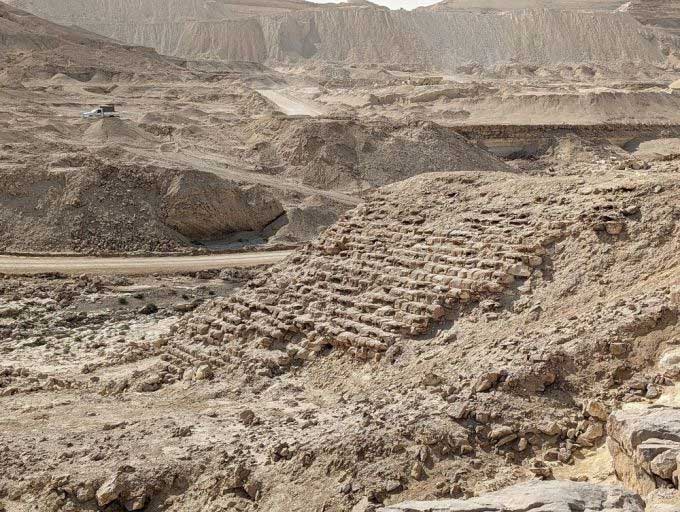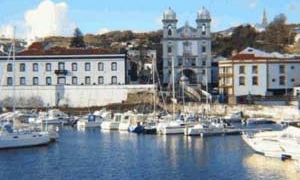Sadd-el-Kafara is considered the oldest large-scale dam in the world, measuring 113 meters in length, 14 meters in height, and 98 meters at its base.
Located about 40 kilometers southeast of Cairo, near the town of Helwan, are the ruins of Sadd-el-Kafara, a large dam constructed approximately 3,700 years ago. Although it was destroyed by flooding before its completion, it is still regarded as the oldest large-scale dam in existence.

Ruins of the Sadd-el-Kafara dam. (Photo: Matthieu Gotz)
The primary purpose of this structure was to prevent water flow from unexpected storms and severe flooding. It also could have provided water for workers and animals involved in quarrying stone for the construction of nearby pyramids and temples.
Sadd-el-Kafara is located at the narrowest point of the Wadi Garawi gorge, where the valley narrows to about 100 meters wide. The German archaeologist Georg Schweinfurth discovered the ruins of Sadd-el-Kafara in 1885. Only the ends of the dam on either side of the gorge remain standing, while the central portion was swept away by floods, leaving a gap of about 50 to 60 meters. The exposed cross-section allows archaeologists to study the construction process of the dam.
The dam originally measured 113 meters in length, 1 meter in height, 98 meters at its base, and 56 meters at its top. The core of the dam was 32 meters wide and could hold 60,000 tons of earth and stone. If completed, the dam would have stored between 465,000 to 625,000 cubic meters of water.
Experts believe that Sadd-el-Kafara was built not for irrigation but to control flash floods, a common phenomenon in narrow valleys, due to its location in Wadi Garawi. There is no evidence to suggest that the farmland surrounding the dam required water for agriculture. Furthermore, the absence of a spillway indicates that the reservoir was not intended for irrigation purposes.
The downstream face of Sadd-el-Kafara shows signs of erosion, leading experts to believe that a flood destroyed this ancient structure. Additionally, the lack of a spillway and any traces of channels or tunnels diverting water around the construction site made the dam even more vulnerable to destruction.
The collapse of Sadd-el-Kafara likely caused a catastrophic flood in the downstream area. The impact of this disaster seems to have been so severe that the ancient Egyptians refrained from building similar dams for nearly eight centuries.


















































